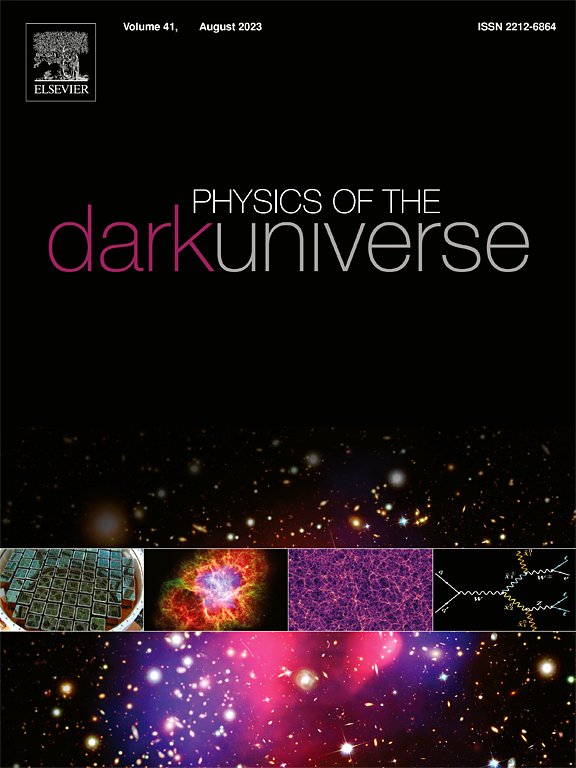接近未来奇点的加速宇宙中的动态黑洞——(超大)质量黑洞的可能起源
IF 6.4
2区 物理与天体物理
Q1 ASTRONOMY & ASTROPHYSICS
引用次数: 0
摘要
我们构建并研究了嵌入在充满宇宙流体(如暗能量)的膨胀宇宙中的动态黑洞时空。当流体的状态方程(EoS)参数为常数时,我们找到了Schwarzschild黑洞嵌入膨胀宇宙的爱因斯坦方程的精确解。这个解决方案不同于众所周知的McVittie度规,其中EoS参数不是一个常数,而是取决于径向坐标。结果表明,动态黑洞随着宇宙的膨胀而增大。如果太初黑洞是在暴胀之前或期间产生的,那么在动态黑洞之上可能是星系中心超大质量黑洞的起源,GW231123事件表明的大质量黑洞,还有暗物质。在宇宙流体EoS更为普遍的情况下,也考虑了宇宙进入有限时间未来奇点时代的情况。热力学和黑洞在不同未来奇点周围的行为被仔细研究。然后证明了黑洞视界增强了潮汐力,但在视界附近,潮汐力对扩展的物体起作用,这与靠近未来奇点的大质量物体相反。我们还提出了一种新的未来奇点,其中黑洞内的奇点是一个具有有限半径的球体。当球面奇点的半径大于黑洞视界的半径时,它就变得裸露了。当奇点的半径变得无限时,宇宙可能会以宇宙末日告终。本文章由计算机程序翻译,如有差异,请以英文原文为准。
Dynamical Black Hole in the accelerating Universe approaching the future singularity — Possible origin of (super-)massive black holes
We construct and investigate the dynamical black hole spacetime embedded in the expanding universe filled with cosmic fluid, such as dark energy. When the equation of state (EoS) parameter of the fluid is a constant, we find exact solutions of the Einstein equation where the Schwarzschild black hole is embedded in the expanding universe. This solution differs from the well-known McVittie metric, where the EoS parameter is not a constant but rather depends on the radial coordinate. It is shown that a dynamical black hole grows with the expansion of the universe. If primordial black holes are created before or during inflation, above dynamical black holes might be the origin of the supermassive black holes at the centre of galaxies, massive black holes suggested by the GW231123 event, and also the dark matter. The case where the cosmic fluid EoS is more general is also considered so that the universe enters the epoch of finite-time future singularity. Thermodynamics and the behaviour of black holes around different future singularities are carefully investigated. It is then demonstrated that the black hole horizon enhances the tidal force, but near the horizon, the tidal force works to press the extended object, which is in contrast with a massive body near to future singularity. We also propose a new type of future singularity where the singularity inside the black hole is a sphere with a finite radius. When the radius of the spherical singularity becomes larger than the radius of the black hole horizon, it becomes naked. The universe may end up with a cosmic doomsday when the radius of the singularity becomes infinite.
求助全文
通过发布文献求助,成功后即可免费获取论文全文。
去求助
来源期刊

Physics of the Dark Universe
ASTRONOMY & ASTROPHYSICS-
CiteScore
9.60
自引率
7.30%
发文量
118
审稿时长
61 days
期刊介绍:
Physics of the Dark Universe is an innovative online-only journal that offers rapid publication of peer-reviewed, original research articles considered of high scientific impact.
The journal is focused on the understanding of Dark Matter, Dark Energy, Early Universe, gravitational waves and neutrinos, covering all theoretical, experimental and phenomenological aspects.
 求助内容:
求助内容: 应助结果提醒方式:
应助结果提醒方式:


